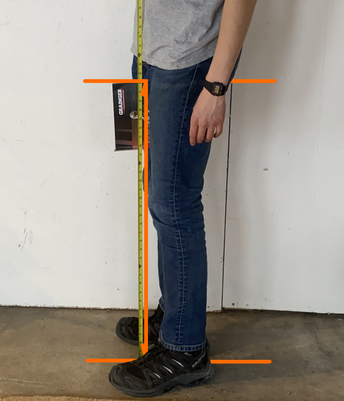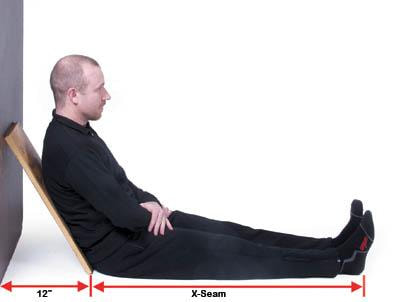RAD ResourcesHere, find resources for starting your biking and running journey
|
-
Products
- All Products
-
Recumbent Trikes
>
- Hase Bikes Trigo
- Hase Bikes Kettwiesel
- Hase Bikes Trets
- HP Velotechnik Scorpion FS
- HP Velotechnik Gekko FX
- ICE Adventure
- ICE Adventure HD
- ICE Full Fat
- ICE Sprint X
- ICE Sprint X Tour
- ICE VTX
- Catrike 5.5.9
- Catrike MAX
- Catrike Villager
- Catrike Dumont
- Catrike Expedition
- Azub Ti Fly X
- BamBuk E-Trike Tandem
- Running Frames >
- Adaptive Bikes and Trikes >
- E-Bikes
- Tandem Bikes >
- Cargo Bikes >
- Hand Cycles >
- Kids Recumbents & Adaptive Pushchairs >
- Demo Bike Sale
- Stay & Ride
- Home Delivery
-
Testimonials
- All Testimonials
- Freedom and Independence is RAD - Kettwiesel Cross
- RAD Bike Rides with the Yellow House
- Brian's Perfect Bike - BerkelBike Pro
- Renata and Russell's Recumbent Renaissance
- Winter Adaptive Biking - Wide Tire Trikes
- Making Moves with MS - BerkelBike Pro
- Riding to Recovery - BerkelBike Pro
- Emily's First Trike - Hase Kettwiesel
- Reclaiming Freedom - Hase Bikes Pino Tandem
- Camille's Special Needs Bike - Hase Pino Tandem
- About
- Resources
- Blog
- Shop
- Contact Us
Sizing
|
Running Frames (Inseam)
|
Trikes (X-seam)
|
|
To find the appropriate saddle height for the RAD RaceRunner, measure the length of your legs with shoes on. Hold a book (or something similar) between your legs, as high as you can keep it. Measure from the top of the book to the floor. You can also measure lying down.
|
Your X-seam measurement is essential when sizing certain recumbents. To get the appropriate measurement, place a 24 inch long board against a wall with the bottom of the board 12 inches from the wall. Sit on the floor with your back and butt against the board. Your X-seam measurement is the distance from the front of the board to the heels of your bare feet.
|
Technical Guides
|
RAD RaceRunner assembly manual. Download the PDF or watch our YouTube video. Please note that the PDF manual is updated more frequently than the video. So if there is a discrepancy between the two, refer to the PDF.
|
|
HASE Bikes
The following videos show you how to adjust the Kettwiesel, Trigo, and Pino.
|
|
ICE Trikes
The following videos show you how to adjust and fold ICE trikes.
|
Accessories
|
The following videos show you how to use our accessories.
|
802-382-0093
Copyright © 2023 RAD-Innovations LLC™
RAD-Innovations LLC, RAD RaceRunner and RADRacer are trademarks of RAD-Innovations LLC
Website by Clover Ridge Media
-
Products
- All Products
-
Recumbent Trikes
>
- Hase Bikes Trigo
- Hase Bikes Kettwiesel
- Hase Bikes Trets
- HP Velotechnik Scorpion FS
- HP Velotechnik Gekko FX
- ICE Adventure
- ICE Adventure HD
- ICE Full Fat
- ICE Sprint X
- ICE Sprint X Tour
- ICE VTX
- Catrike 5.5.9
- Catrike MAX
- Catrike Villager
- Catrike Dumont
- Catrike Expedition
- Azub Ti Fly X
- BamBuk E-Trike Tandem
- Running Frames >
- Adaptive Bikes and Trikes >
- E-Bikes
- Tandem Bikes >
- Cargo Bikes >
- Hand Cycles >
- Kids Recumbents & Adaptive Pushchairs >
- Demo Bike Sale
- Stay & Ride
- Home Delivery
-
Testimonials
- All Testimonials
- Freedom and Independence is RAD - Kettwiesel Cross
- RAD Bike Rides with the Yellow House
- Brian's Perfect Bike - BerkelBike Pro
- Renata and Russell's Recumbent Renaissance
- Winter Adaptive Biking - Wide Tire Trikes
- Making Moves with MS - BerkelBike Pro
- Riding to Recovery - BerkelBike Pro
- Emily's First Trike - Hase Kettwiesel
- Reclaiming Freedom - Hase Bikes Pino Tandem
- Camille's Special Needs Bike - Hase Pino Tandem
- About
- Resources
- Blog
- Shop
- Contact Us




